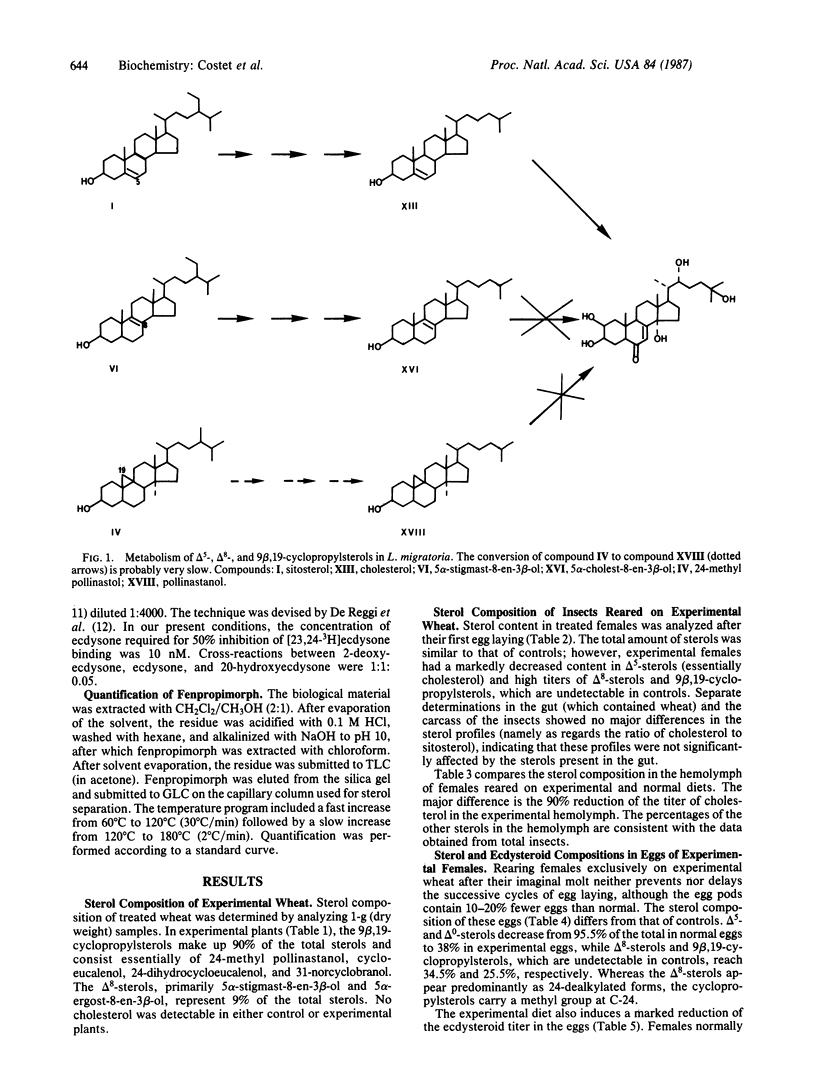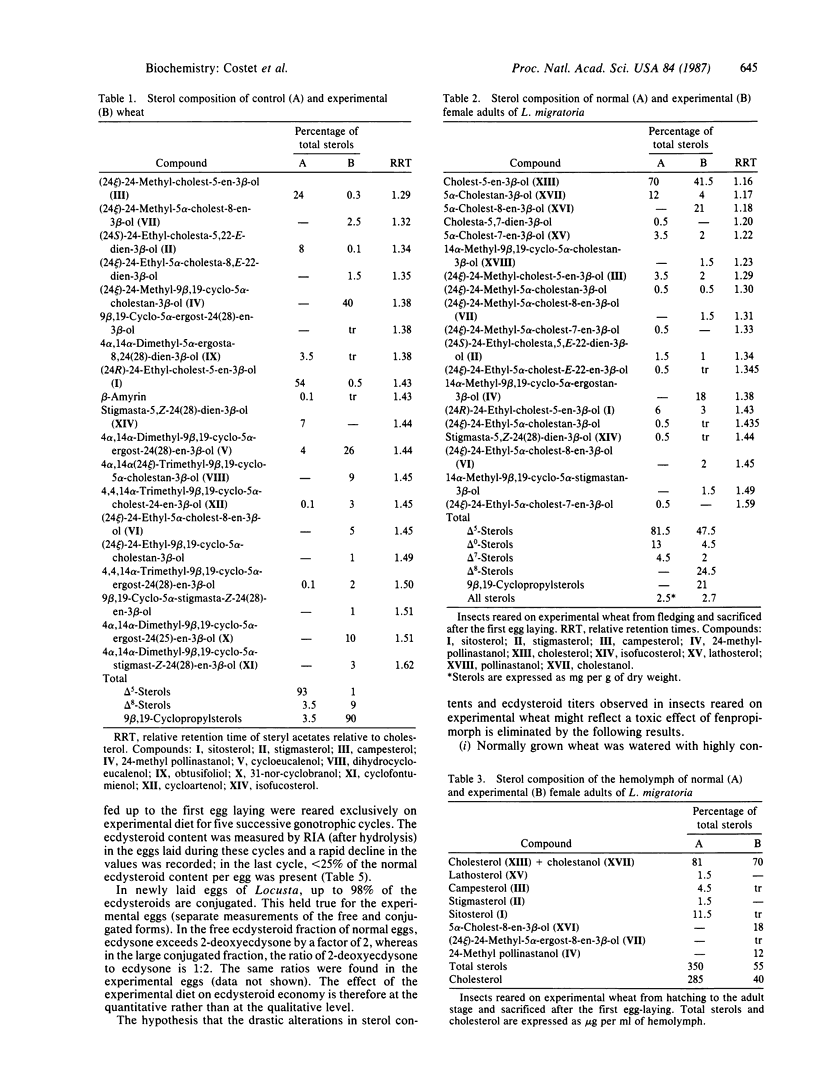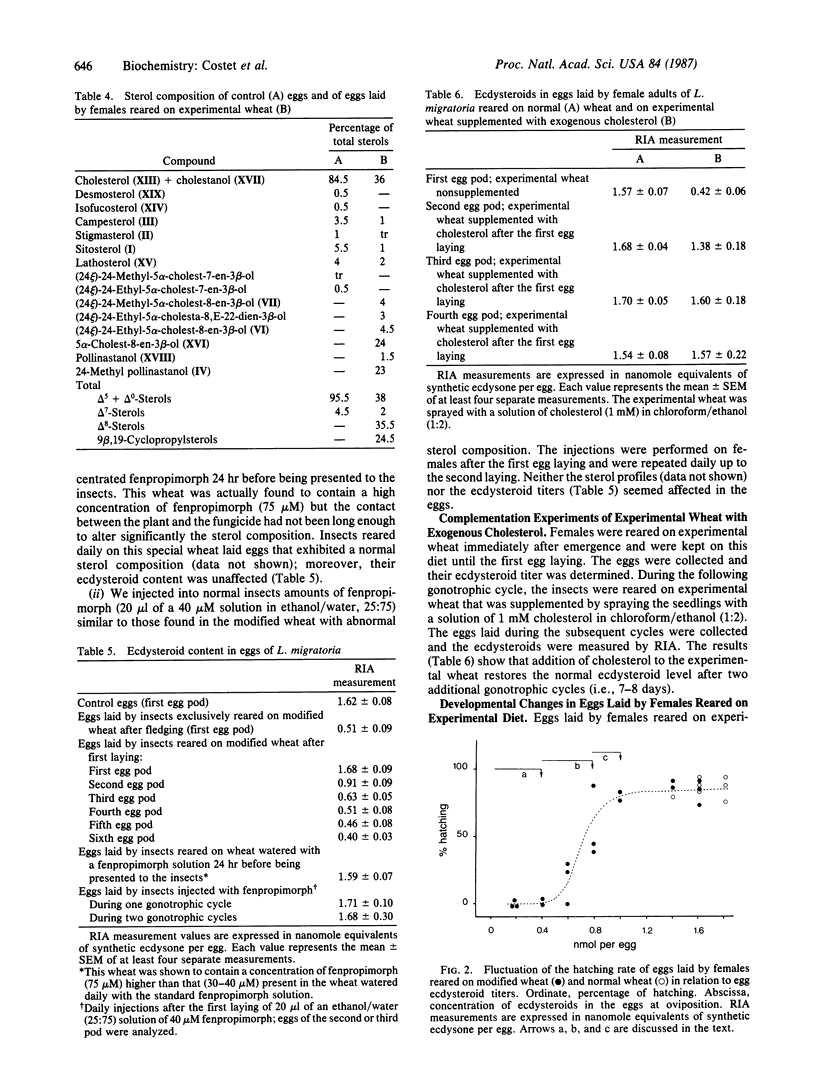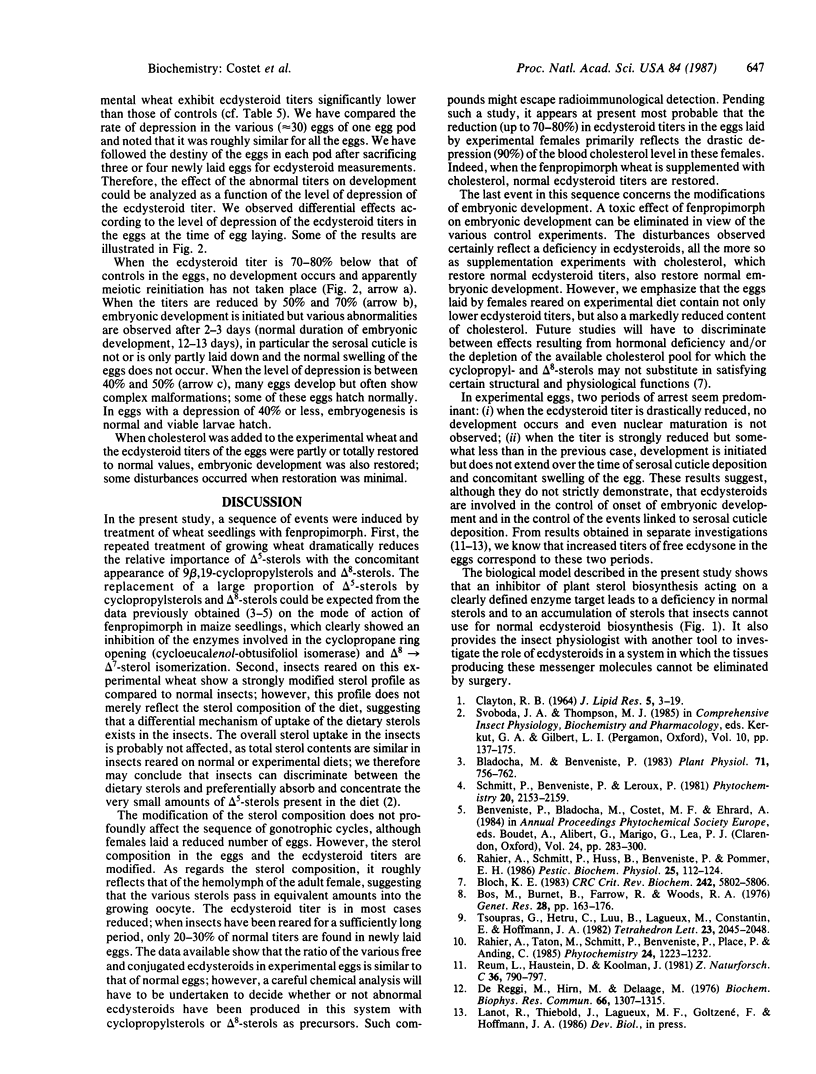Abstract
Wheat seedlings germinating in the presence of the systemic fungicide fenpropimorph accumulate 9β,19-cyclopropylsterols (95% of total sterols) in place of Δ5-sterols, which are normally produced in these plants. Adult females of the phytophagous insect Locusta migratoria show a dramatic decrease in their cholesterol content when reared on fenpropimorph-treated wheat. These females lay eggs with the ecdysteroid concentration reduced by up to 80% as compared to controls. Injection of fenpropimorph to the insects or feeding them on wheat coated with the fungicide (normal sterol composition) does not affect their sterol or ecdysteroid profiles; addition of cholesterol to fenpropimorph-treated wheat prior to feeding restores normal ecdysteroid titers in the insects. The severe reduction of the ecdysteroid content in eggs laid by females reared on fenpropimorph-treated wheat is associated with a series of developmental arrests and/or abnormalities. The results show that the dietary 9β,19-cyclopropylsterols cannot be used by Locusta in place of Δ5-sterols for ecdysteroid biosynthesis. They suggest that the selective inhibition of specific enzymes in the sterol biosynthetic pathway of the plants can be used as a strategy to control insect development.
Keywords: fenpropimorph, cycloeucalenolobtusifoliol isomerase, sterols, ecdysteroid biosynthesis
Full text
PDF




Selected References
These references are in PubMed. This may not be the complete list of references from this article.
- Bladocha M., Benveniste P. Manipulation by tridemorph, a systemic fungicide, of the sterol composition of maize leaves and roots. Plant Physiol. 1983 Apr;71(4):756–762. doi: 10.1104/pp.71.4.756. [DOI] [PMC free article] [PubMed] [Google Scholar]
- Bos M., Burnet B., Farrow R., Woods R. A. Development of Drosophila on sterol mutants of the yeast Saccharomyces cerevisiae. Genet Res. 1976 Oct;28(2):163–176. doi: 10.1017/s0016672300016840. [DOI] [PubMed] [Google Scholar]
- CLAYTON R. B. THE UTILIZATION OF STEROLS BY INSECTS. J Lipid Res. 1964 Jan;5:3–19. [PubMed] [Google Scholar]
- De Reggi M. L., Hirn M. H., Delaage M. A. Radioimmunossay of ecdysone. An application to Drosophila larvae and pupae. Biochem Biophys Res Commun. 1975 Oct 27;66(4):1307–1315. doi: 10.1016/0006-291x(75)90502-1. [DOI] [PubMed] [Google Scholar]


